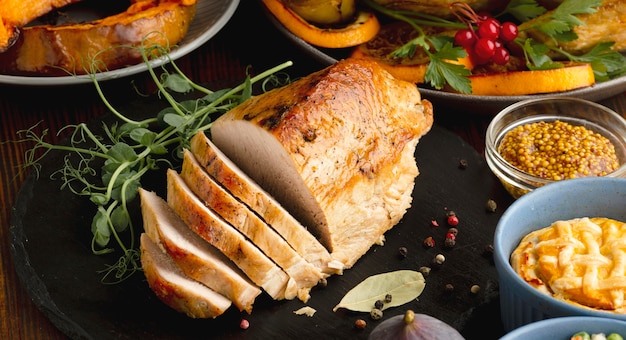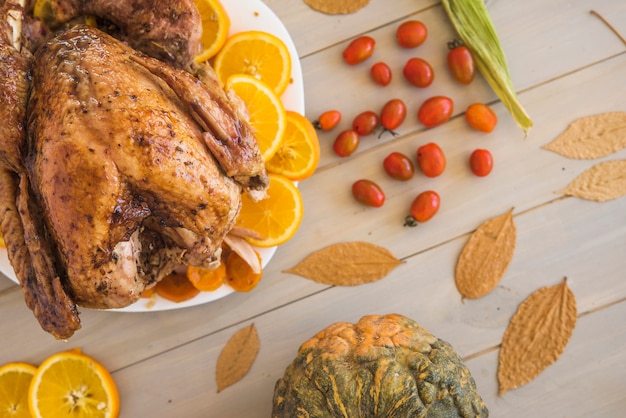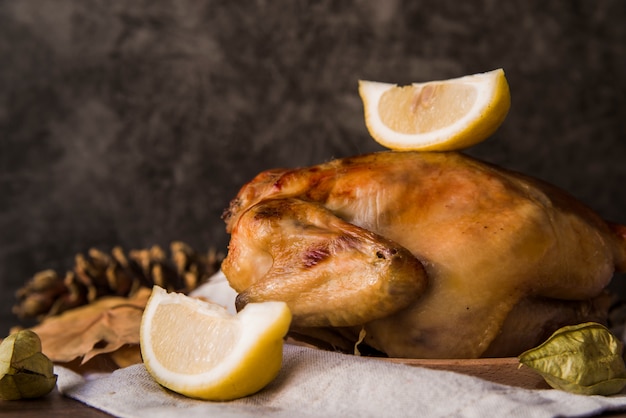Let's face it, a juicy, perfectly cooked turkey breast is a culinary triumph. It's the centerpiece of festive gatherings, a crowd-pleasing Sunday dinner, or even a delicious weeknight meal. But getting that golden-brown, tender, and flavorful result can be a bit of a challenge, especially when dealing with a hefty 7-pound bird. Don't worry, I've been there, and I'm here to guide you through the process, sharing my hard-won knowledge and personal experiences along the way.
This guide will take you from pre-roasting prep to achieving that perfect internal temperature, offering tips, tricks, and even some tantalizing recipes to make your turkey breast a culinary masterpiece. Get ready for a journey into the world of turkey breast cookery, where you'll discover the secrets to creating a dish that's sure to impress.
Part 1: Setting the Stage

1. The Big Decision: Oven or Stovetop?
The first fork in the road: oven or stovetop? I'm a staunch believer in oven roasting. It's hands-off, allowing you to focus on other parts of your meal, and the result is consistently juicy and tender. The slow, even heat of the oven ensures that the breast cooks thoroughly without drying out. Remember, you want that luscious, moist turkey meat!
However, if you're pressed for time or crave that crispy skin that comes from pan-frying, the stovetop is a great alternative. It's a bit more hands-on, but it's a perfectly valid choice for a delicious turkey breast. Just be sure to keep a close eye on it, flipping it regularly to ensure even browning.
2. Preparing Your Turkey Breast for Success
Before you even think about turning on the oven or lighting the stove, take some time to prepare your turkey breast properly. It's the foundation for a fantastic meal, and a few simple steps can make all the difference.
First, pat that turkey breast dry with paper towels. This removes any excess moisture that can lead to steaming rather than browning. Then, generously season it with salt and pepper. Remember, you can't over-season a turkey breast! For a truly flavorful experience, try adding your favorite herbs and spices. Some of my go-to favorites include thyme, rosemary, garlic powder, onion powder, and paprika.
A little bit of olive oil or butter can add extra richness and moisture to the breast. Gently rub it over the skin for a beautiful golden-brown finish. The key is to make sure the seasoning and moisture penetrate the skin to create a delectable flavor throughout the meat.
3. Temperature is King: Understanding the Importance of Doneness
Here's the golden rule of turkey breast cookery: an internal temperature of 165°F (74°C) is your target. This ensures the turkey breast is cooked through and safe to eat. Don't just rely on visual cues; invest in a meat thermometer, which is the most accurate way to gauge doneness.
You want to avoid overcooking, which can lead to a dry and tough breast. On the other hand, undercooked turkey is dangerous. A meat thermometer takes the guesswork out of the equation, ensuring you'll enjoy a delicious and safe meal.
Part 2: The Oven Roasting Method

1. The Perfect Oven Temperature for a Juicy Breast
For a 7-pound turkey breast, 325°F (163°C) is the ideal oven temperature. It provides even heat, ensuring the breast cooks thoroughly without drying out. If you're feeling adventurous, you can experiment with a slightly higher temperature (like 350°F or 175°C). But keep a close eye on it. Higher temperatures might lead to crispier skin, but they also increase the risk of overcooking the meat.
2. Cooking Time: A General Guide
Now for the million-dollar question: how long do you cook a 7-pound turkey breast? A general rule of thumb is to cook it for about 2-2.5 hours at 325°F (163°C). But remember, every oven is different, and it's always best to err on the side of caution. I usually start checking the internal temperature after 1.5 hours to ensure it's on track.
3. Basting: The Secret Weapon for Extra Moisture
Here's a little trick up my sleeve: basting. Every 30-45 minutes, I recommend basting the turkey breast with pan drippings or chicken broth. This keeps the meat moist and adds a depth of flavor.
You can get creative with your basting liquid. A blend of butter and olive oil imparts a richer flavor, and adding herbs and spices like thyme, rosemary, or sage infuses the meat with even more delicious aromas.
4. The Resting Period: Let the Juices Redistribute
Once your turkey breast has reached the magic 165°F (74°C) internal temperature, don't be tempted to carve it immediately. Give it a well-deserved rest for 10-15 minutes. This crucial step allows the juices to redistribute throughout the breast, resulting in a more succulent and flavorful final product.
While the turkey rests, take advantage of the time to prepare your sides and gravy. The aroma of the roasted turkey will surely entice everyone to the dinner table.
Part 3: Mastering the Stovetop Method

1. Pan-Frying: A Quick and Delicious Option
The stovetop offers a faster alternative to oven roasting. Pan-frying is my preferred method for a quick and flavorful turkey breast. Heat a large skillet over medium-high heat. Add a tablespoon or two of oil and sear the turkey breast for about 5 minutes per side to create a beautiful golden-brown crust.
Reduce the heat to medium-low, cover the skillet, and cook for another 15-20 minutes, or until the internal temperature reaches 165°F (74°C). Remember to flip the turkey breast halfway through to ensure even cooking.
2. Stovetop Tips for Success
Stovetop cooking requires a bit more vigilance than oven roasting. Keep a close eye on the heat, adjusting it as needed to prevent burning. I also recommend using a meat thermometer to check the internal temperature regularly, especially during the covered cooking phase.
If you notice the turkey breast browning too quickly, reduce the heat or add a tablespoon or two of broth to the skillet. This will help prevent dryness and add a touch of extra flavor. As always, don't forget to let the turkey breast rest for 10-15 minutes before carving.
Part 4: From Roasted to Delicious: turkey breast recipes
Now for the fun part: transforming your cooked turkey breast into delectable meals. Here are three recipes that showcase the versatility of this culinary gem.
1. roast turkey breast with Cranberry Sauce: A Classic Combination
This is a classic for a reason! It's simple, delicious, and always a crowd-pleaser. After roasting the turkey breast according to the instructions above, simply serve it with a dollop of homemade cranberry sauce. It's the perfect balance of sweet and savory. Here's a simple recipe for the cranberry sauce:
Ingredients:
- 1 cup fresh or frozen cranberries
- 1/2 cup orange juice
- 1/4 cup sugar
- 1/4 cup water
- 1 tablespoon orange zest
- 1/4 teaspoon ground cinnamon
- 1/4 teaspoon ground ginger
Instructions:
- Combine all ingredients in a saucepan over medium heat. Bring to a boil, then reduce heat to low and simmer for 10-15 minutes, or until the cranberries have burst and the sauce has thickened.
- Remove from heat and let cool slightly before serving.
2. Spiced Turkey Breast with Roasted Vegetables: A Hearty and Flavorful Meal
For a more flavorful and aromatic dish, try this recipe. Rub the turkey breast with a spice blend of your choice. I often use a combination of garlic powder, onion powder, paprika, and cumin. Then, roast it in the oven with your favorite vegetables.
I love to use carrots, potatoes, and onions, but feel free to experiment with your favorites. Add a drizzle of olive oil and a sprinkle of herbs like thyme or rosemary for extra flavor. The vegetables will soak up all the delicious turkey juices, creating a truly satisfying meal.
3. Turkey Breast with Lemon and Herb Butter: A Light and Refreshing Option
For a more delicate and refreshing flavour, try this recipe. Roast the turkey breast as instructed. While it's resting, melt some butter with lemon juice and fresh herbs like parsley, thyme, and rosemary. Spoon this delicious sauce over the turkey breast before serving. It's light, flavorful, and perfect for a special occasion.
Part 5: Leftover Magic: Delicious Ways to Use Your Turkey Breast
Don't let those leftover turkey breast slices go to waste! There's a world of culinary possibilities waiting to be explored. Here are some of my favorite ways to repurpose those delicious leftovers.
1. Turkey Breast Sandwiches: A Classic and Versatile Choice
My go-to for leftover turkey breast is a simple yet satisfying sandwich. Slice the turkey breast thinly, and build your masterpiece on your favorite bread. A smear of mayonnaise and mustard, crisp lettuce, and juicy tomato are always a classic combination.
For extra flavor, add some cheese, avocado, or bacon. You can even get creative with different spreads, like a cranberry-walnut sauce or a spicy chipotle mayo. The possibilities are endless!
2. Turkey Breast Salad: A Light and Refreshing Meal
Chop the leftover turkey breast into bite-sized pieces and add it to your favorite salad. I love a mix of greens, vegetables, and a light vinaigrette. You can also add some crumbled cheese, nuts, or dried fruit for extra texture and flavor.
A turkey breast salad is a fantastic lunch option or a light and refreshing dinner. It's also a great way to use up any leftover vegetables you have on hand.
3. Turkey Breast Soup: Comforting and Flavorful
For a warm and comforting meal, try making a turkey breast soup. Chop the leftover turkey breast into small pieces and add it to a pot of vegetable broth. Then, add your favorite vegetables, such as carrots, celery, potatoes, and onions. Simmer for 30 minutes, or until the vegetables are tender. Serve with a dollop of sour cream or a sprinkle of fresh parsley.
Turkey breast soup is a perfect way to use up leftovers and warm your soul on a chilly day. It's also a great way to get a healthy dose of vegetables and protein.
Part 6: FAQs: Your Turkey Breast Questions Answered
Let's address some of the common questions that pop up when tackling a 7-pound turkey breast.
1. Can I cook a frozen turkey breast?
You can cook a frozen turkey breast, but it will take longer than cooking a fresh one. The general rule is to add an extra 50% to the cooking time. So, if your turkey breast is frozen, you’ll need to cook it for about 3-3.75 hours. However, I always recommend thawing it in the refrigerator overnight before cooking it. This ensures a more even cook and a juicier result.
2. How do I know if my turkey breast is cooked through?
The most reliable way to check if your turkey breast is cooked through is to use a meat thermometer. Insert the thermometer into the thickest part of the turkey breast, making sure it doesn't touch any bone. The temperature should read 165°F (74°C). If it's not, continue cooking until it reaches that temperature.
3. What happens if my turkey breast is overcooked?
If your turkey breast is overcooked, it will be dry and tough. The good news is, there are a few things you can do to salvage it. You can try adding some moisture back in by basting it with broth or adding some sauce. You can also use it in a dish that involves a lot of liquid, like soup or stew.
4. Can I stuff my turkey breast?
You can stuff your turkey breast, but it's not as common as stuffing a whole turkey. If you choose to stuff it, make sure to use a stuffing that cooks at a similar temperature as the turkey breast. Also, be sure to stuff it loosely so that the stuffing cooks evenly. And don't forget to check the internal temperature of the stuffing with a meat thermometer to ensure it's cooked through.
5. How long can I store leftover turkey breast?
Leftover turkey breast can be stored in the refrigerator for 3-4 days. You can also freeze it for up to 2-3 months. Just make sure to wrap it tightly in plastic wrap or foil before freezing. To reheat frozen turkey breast, thaw it in the refrigerator overnight and then reheat it in the oven, microwave, or on the stovetop.
Part 7: A Final Word: Embrace Your Inner Turkey Chef
Congratulations! You've now got all the knowledge you need to tackle a 7-pound turkey breast and create a culinary masterpiece. Remember, the key is to follow the guidelines, check the temperature, and have fun with it! Experiment with different flavors, try out new recipes, and don't be afraid to get creative with your leftovers. Happy cooking!
Everyone is watching

Corn on the Cob: The Ultimate Guide to Perfectly Cooked Ears
Healthy MealsAh, corn on the cob. Just the name evokes images of sunny days, barbecues, and that sweet, juicy flavour that ...

Scallops: The Ultimate Guide to Perfect Cooking
Healthy MealsAh, scallops. Those delicate, sweet, and utterly delicious morsels of the sea. They hold a special place in my...

Spaghetti Squash: The Ultimate Guide to Cooking and Serving
Healthy MealsRemember that time you saw spaghetti squash at the supermarket, looking all bumpy and strange, and thought, "W...

Salmon Cooking Times: Perfect Guide for Every Recipe
Healthy MealsLet me tell you, cooking salmon is an art form. It's all about getting that perfect balance: juicy and tender,...

Ham Cooking Time: How Long to Bake, Smoke, or Boil a Delicious Ham
Healthy MealsAh, ham. It's a classic, isn't it? A real crowd-pleaser, especially around holidays. And when done right, it'...
